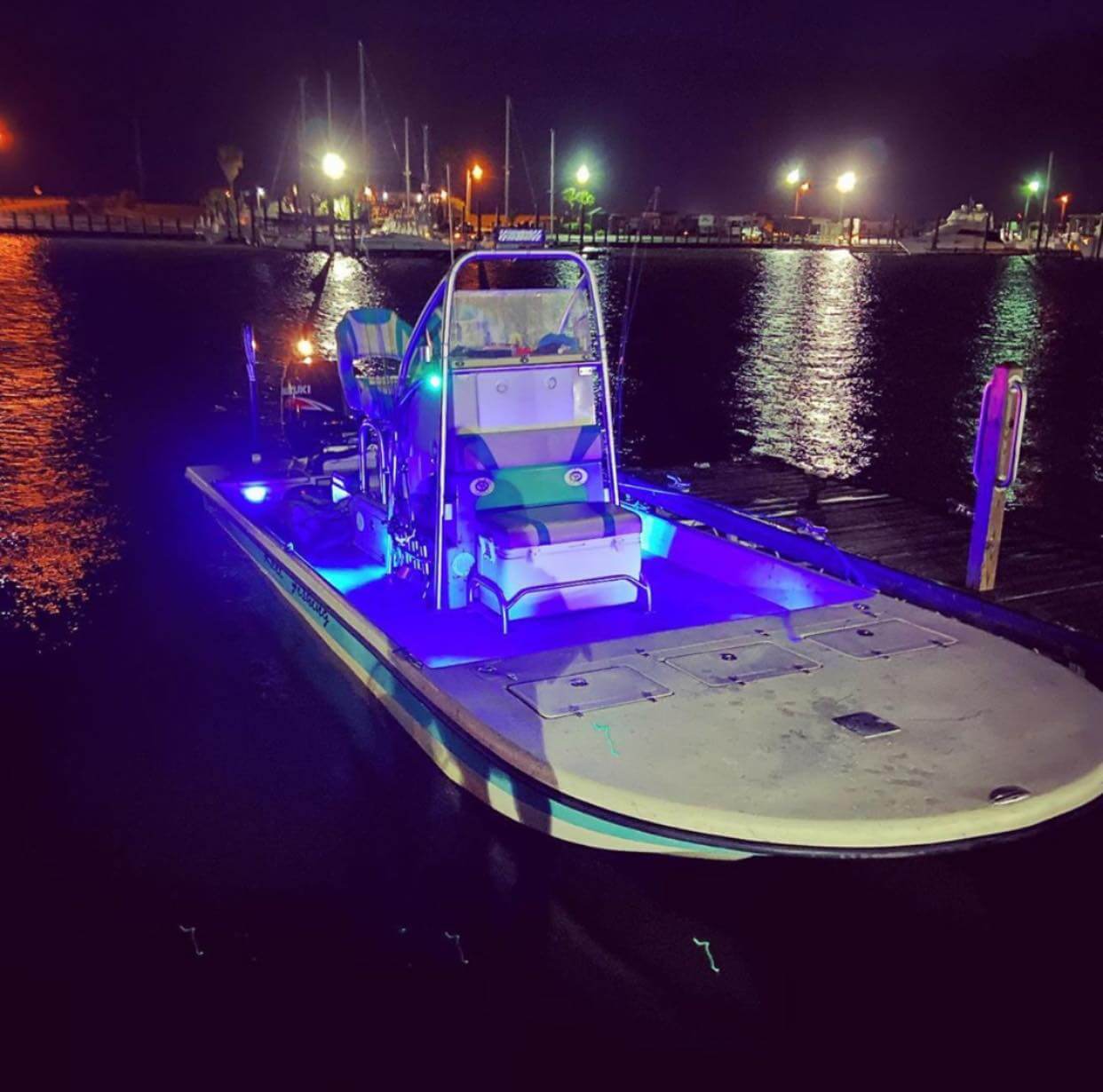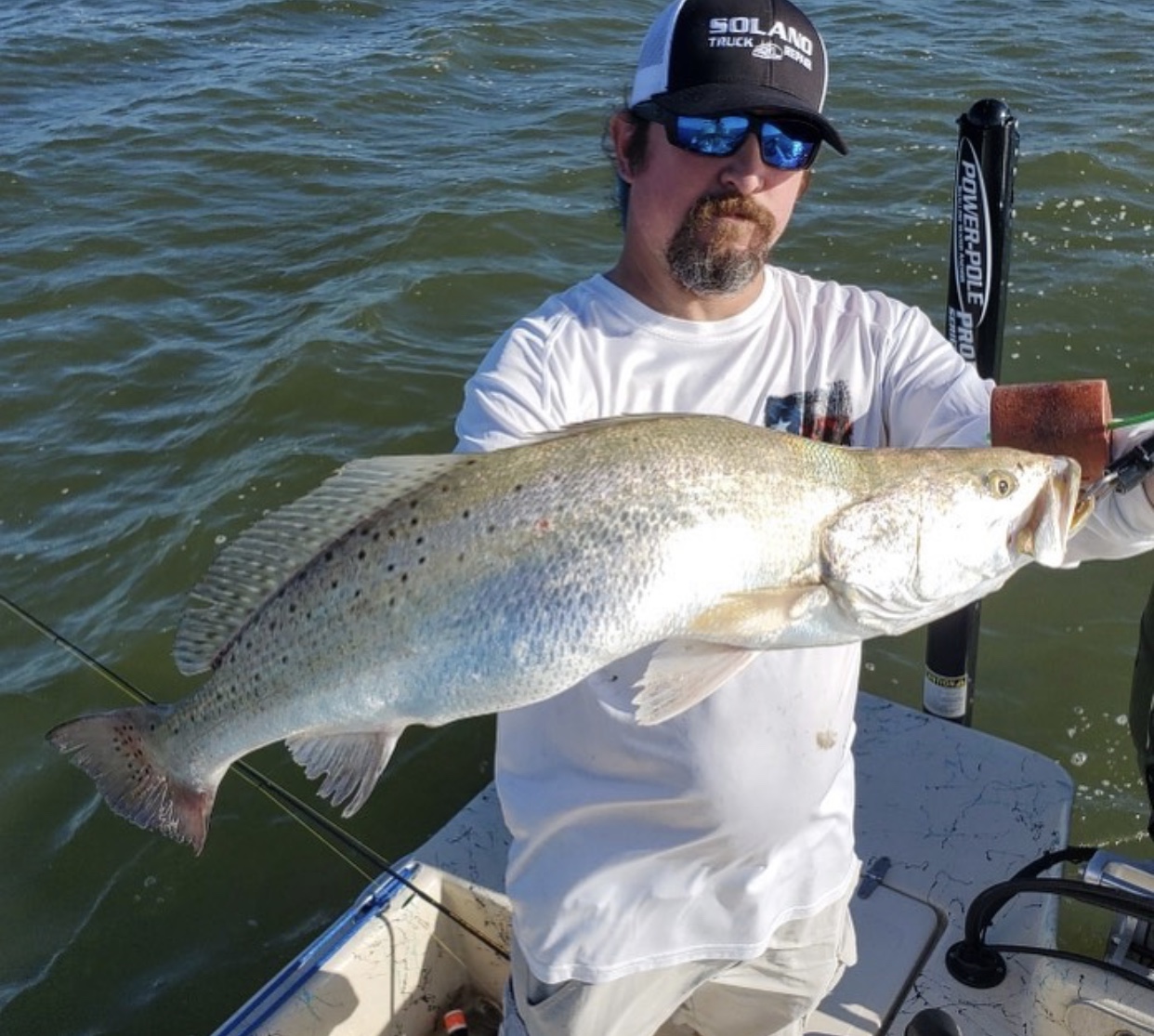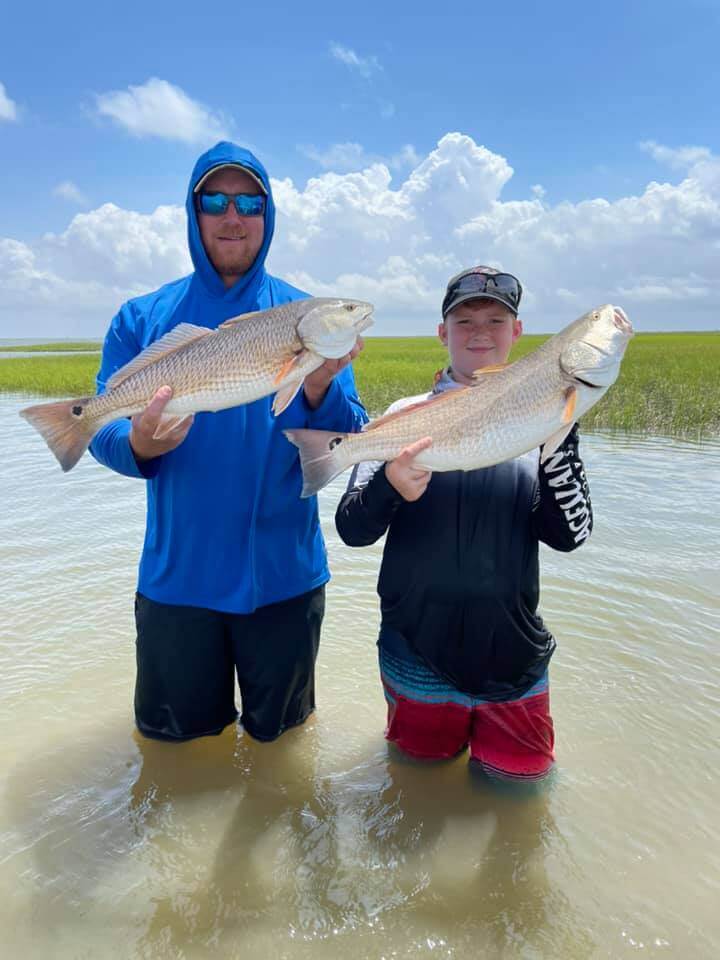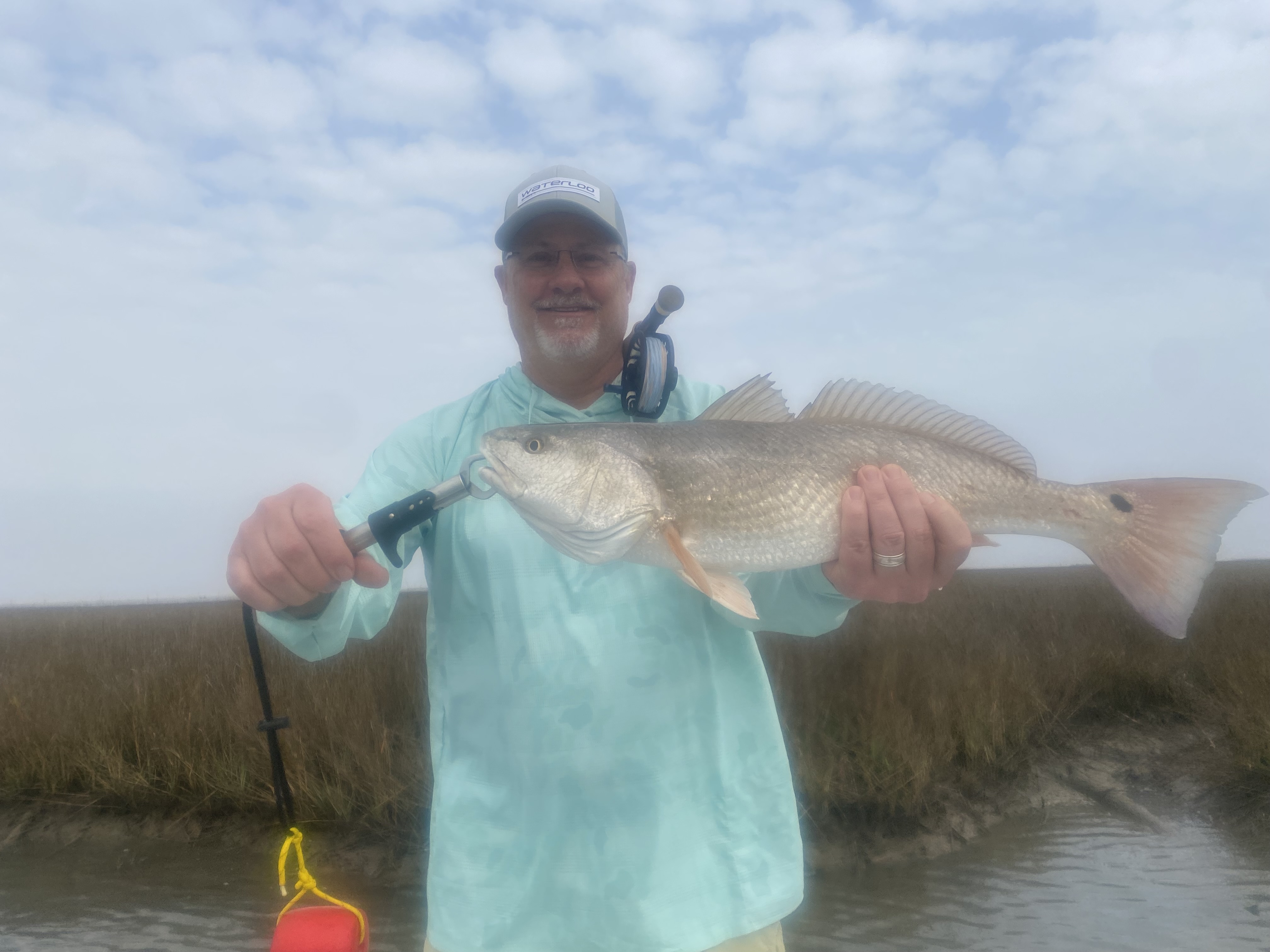Inshore, Flats Fishing in Matagorda
Wade East Matagorda
Inshore, Jetty, Flats in Matagorda
Matagorda E/W Bay Half Day
Inshore, Flats Fishing in Matagorda
Gator Trout Trip
Inshore, Flats Fishing in Matagorda
Matagorda "Texas Trio"
Matagorda Inshore Slammin
Inshore, Flats Fishing in Matagorda
Half-Day Trip (Matagorda TX)
Inshore, Flats Fishing in Matagorda
Half-Day Trip (Palacios TX)
Inshore, Jetty, River in Matagorda
Matagorda Fishing Adventures
Inshore, Jetty, Flats in Matagorda
Half Day Trip - Bay
Inshore, Flats Fishing in Matagorda
Half Day Fly Fishing Matagorda Bay
We started Captain Experiences to make it easy to book fishing and hunting guides around the world. With over 2,000 Damn Good Guides, our platform makes finding and booking a trip seamless. Head here to check out our trips.
Each fall, many of the bays along the Gulf Coast offer the opportunity for anglers to get in on some fast angling action by fishing under the birds. When the weather starts to turn a bit cooler, thousands of shrimp start to migrate out of the shallow marshes and towards the deeper waters of the Gulf of Mexico. Both the fish and the birds rely on this annual migration, and they gorge themselves on the shrimp and anything else that happens to get in the way.
Basics of Fishing the Birds
Fishing the birds is different from other types of fishing. Instead of positioning yourself in a key location such as along the jetties, over a reef, or near a channel, fishing the birds involves being on the move. Fishermen drive their boats to the general area in which birds have been working in recent days or in prior fall seasons, and then you look for the action. When you see the groups of 5 to 50 seagulls working over a small area of the bay, then you are in luck. There are fish under the waves driving the shrimp and other bait towards the surface where they are picked off by hovering seagulls. Redfish, speckled trout and many other species of fish are just under the water ready to be caught.

10 Things to Know When Fishing the Birds
Because the exciting bird action only occurs in certain areas at specific times of the year, many fishermen are not familiar with exactly how to maximize their chances of catching the most fish under the birds. There are several things to know that can improve your chances of successfully fishing the birds. These ten tips should get you started:
1) Start Upwind
When you see a flock of seagulls, the temptation is to drive straight into the birds as quickly as possible. Take the time to drive around the birds and get up wind. You will catch more fish if you are able to shut down the motor and let the wind take you silently towards the action.
2) Be Ready to Cast
Seagulls and the fish below are often skittish, and anglers may only have the opportunity to hook up with a fish during the first minute or two when you reach the birds. Be prepared with your favorite rod and reel ready to go as you approach.
3) Bring Binoculars
Fishing the birds is its own type of sight fishing. You are looking for flocks of birds in a large general area of open water. Binoculars will help you see twice as far so that you can pick the best direction to find more birds and fish.
4) Cast for Distance
The fish and birds are always on the move. You might see a seagull dip down to pick up a shrimp at the far end of your casting range. Using the right equipment can help your cast go a few extra yards, and that might make all the difference.
5) Use Good Manners
Fishing the birds is a proven way for anglers of all skill levels to find a productive area with lots of redfish and trout. On crowded weekends, there are frequently more boats than there are flocks of seagulls. You may have to pass by a few promising birds if another angler beats you to the spot and you cannot quietly approach from a respectful distance.
6) Vary Your Lures
Throwing an average-weight jig head with your favorite soft plastic is a proven way to catch fish. If the trout and reds aren’t interested in your first choice, then mix it up. Sometimes the fish prefer a deep lure dragged near the bottom or a topwater lure on the surface. Often a popping cork will catch the biggest trout. Switch things up whenever the bite starts to slow down.
7) Use a Trolling Motor
A good trolling motor that can be easily deployed is a key piece of equipment for successfully fishing the birds for redfish and speckled trout. The birds and the fish underneath will move, and you need to be able to silently move along with them in order to catch the most fish.
8) Have a Towel
If you fish the birds long enough, then you may eventually have the misfortune of having a hungry seagull get tangled up in your fishing line. Don’t panic. You can minimize the risk of harm to the bird and yourself by having a towel handy. Put the towel over the bird’s head, then safely remove the line so that you can gently release the seagull.
9) Go for the Best Birds
Not all groups of birds are the same. In some places along the coast, hundreds of gulls and terns gather over large groups of gafftopsail catfish and sand trout. Small terns have the nickname “liar birds” because they can feed when no trout and reds are in the area. The sweet spot is typically groups of three to thirty seagulls that are actively working a small area and diving down until they touch the surface.
10) Stick Around
On days when the birds are few and far between, don’t give up just because the birds flew away from the boat. Continue drifting for several minutes and good things could happen. First, you might catch a fish. Just because the birds moved, doesn’t mean the fish moved. Second, the birds may form a new group nearby if you give them enough time.
Best Locations for Fishing Under the Birds
Not all bays along the Gulf Coast have the same reliable bird action every fall. Certain locations seem to be overrun with gafftop and sandies, while redfish and speckled trout are plentiful elsewhere. Some of the better areas to try your luck with fishing the birds include:
East Matagorda Bay at the far north end of the Central Texas Coast
West Matagorda Bay in the Central Texas Coast
Trinity Bay near Houston and Galveston
Sabine Lake along the Texas -Louisiana border
Calcasieu Lake (also known as Big Lake) in Louisiana
When the cooler temperatures arrive and fall begins, fishing under the birds starts to heat up. At Captain Experiences, we are available to help you arrange a fall fishing trip to maximize your chances for success. For help booking your next trip, visit us at CaptainExperiences.com.
Joey Butrus
Updated on June 22, 2023

April 26, 2022

November 15, 2023

May 13, 2024

April 15, 2022

July 31, 2024
Related Articles
February 9, 2021
June 3, 2021
May 6, 2021
Featured Locations
- Fishing Charters Near Me
- Austin Fishing Guides
- Biloxi Fishing Charters
- Bradenton Fishing Charters
- Cabo San Lucas Fishing Charters
- Cancun Fishing Charters
- Cape Coral Fishing Charters
- Charleston Fishing Charters
- Clearwater Fishing Charters
- Corpus Christi Fishing Charters
- Crystal River Fishing Charters
- Dauphin Island Fishing Charters
- Daytona Beach Fishing Charters
- Destin Fishing Charters
- Fort Lauderdale Fishing Charters
- Fort Myers Fishing Charters
- Fort Walton Beach Fishing Charters
- Galveston Fishing Charters
- Gulf Shores Fishing Charters
- Hatteras Fishing Charters
- Hilton Head Fishing Charters
- Islamorada Fishing Charters
- Jacksonville Fishing Charters
- Jupiter Fishing Charters
- Key Largo Fishing Charters
- Key West Fishing Charters
- Kona Fishing Charters
- Lakeside Marblehead Fishing Charters
- Marathon Fishing Charters
- Marco Island Fishing Charters
- Miami Fishing Charters
- Montauk Fishing Charters
- Morehead City Fishing Charters
- Naples Fishing Charters
- New Orleans Fishing Charters
- New Smyrna Beach Fishing Charters
- Ocean City Fishing Charters
- Orange Beach Fishing Charters
- Panama City Beach Fishing Charters
- Pensacola Fishing Charters
- Pompano Beach Fishing Charters
- Port Aransas Fishing Charters
- Port Orange Fishing Charters
- Rockport Fishing Charters
- San Diego Fishing Charters
- San Juan Fishing Charters
- Sarasota Fishing Charters
- South Padre Island Fishing Charters
- St. Augustine Fishing Charters
- St. Petersburg Fishing Charters
- Tampa Fishing Charters
- Tarpon Springs Fishing Charters
- Venice Fishing Charters
- Virginia Beach Fishing Charters
- West Palm Beach Fishing Charters
- Wilmington Fishing Charters
- Wrightsville Beach Fishing Charters


































